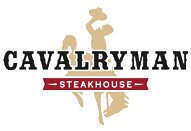Where did Laramie Street Names Come From?
By
Kim Viner
Laramie Plains Museum
Editor’s note: This story is one in a series prepared for the Albany County Museum Coalition, an alliance of organizations that promote Laramie’s historic and cultural resources.
Did you ever wonder how the streets in downtown Laramie got their names? Well, if you like the names, give credit to the Laramie Boomerang.
On February 19, 1889, the editors at the Boomerang stated that the original 1868 east to west street names of A, B, C etc. and the north to south numbered streets were not becoming of a modern metropolis in the late 1800’s. So, on that day the paper suggested an update was necessary.
The paper proposed that the streets should be renamed for early settlers or well-known locations. Names such as Trabing, Hutton, Holliday and Fillmore and famous sites such as Yellowstone were initially suggested.
Within a week, however, the Boomerang published another article that offered a different suggestion. This one came from local businessman W.H. Root. He suggested to the paper that the streets be named after “well known military officers who have served in this vicinity.” The Boomerang’s suggestion, with Root’s modification, took hold and soon the Laramie city council appointed a three-person committee to study the proposal.
On March 15, 1889, they reported to the council a list of names that should be considered and the recommendation that the numbered streets not be changed. For the east to west streets they chose mostly military officers and some pioneers. Over the next week, the list was changed. The proposed Bonneville Street was changed to Grand Avenue and the proposed Bridger Street was changed to Sheridan Street. On March 21, the Boomerang listed the names for all the streets that were to be voted upon by the city council.
The list was adopted by city ordinance on May 8, 1889, and the formal list published by the paper on May 14. The paper praised the actions of the council, noting it was one of the last acts of the outgoing administration following the election of new council members on April 2, 1889 who would take office in June.
There was confusion over the changes. In early June, new mayor Augustus Trabing asked at a council meeting if the change had been approved. He said that several local residents where not sure of the name of the street in front of their houses. Councilman Hicks assured the mayor that the changes were official and lamented that people would know that if they simply read the paper. To rectify the situation, H. D. Beemer was hired to paint street signs that were placed where the newly named streets intersected Second Street.
The new street names north of University to Mitchell have remained the same as they were adopted in 1889. Two changes happened south of University. Mizner Street was never built and the name not used. A significant change occurred in 1928. A proposal was made to change Thornburgh Street to Ivinson Avenue in honor of all the philanthropic works Ivinson had done for the city. Just after the New Year, A.C. Jones, the vice president of the First National Bank and a longtime friend of Edward Ivinson, circulated a petition asking citizens of Thornburgh Street to support his call to the city council to rename the thoroughfare “Ivinson Avenue.”
All but one or two agreed and Jones presented the petition to the city. On January 18, the city council passed the ordinance renaming the street Ivinson Avenue. Mayor Downey was out of the city on that day but signed the ordinance on January 21, 1928. Interestingly, there is no record of the official name being changed to “Ivinson Street” as shown on current street signs.
Kim Viner, “Street Names in Laramie,” Volunteer at the Laramie Plains Museum
